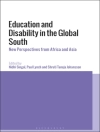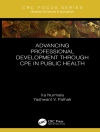‚An excellent description and analysis of East Asian medicine … Based on fieldwork conducted in Japan during 1973 and 1974, which involved the use of a variecy of participant-observer techniques, as well as extensive reading in primary and secondary sources in Japanese and English, Lock’s study makes a significant contribution to our understanding of an important dimension of life in Japan. . . In well-written chapters dealing with the philosophical foundations and historical development of East Asian medicine, Japanese attitudes regarding health, illness, and the human body, detailed description of kanpo clinics, herbal pharmacies, acupuncture and moxibustion clinics, shiatsu and anma clinics, East Asian medical schools as well as the interactions between various providers and patients (customers), Lock develops the cultural thesis … In the process, she provides information on things most visitors to Japan have seen, heard, felt, and smelled but rarely understood.‘ -Journal of Asian Studies ‚Breaks important new ground . . Lock discusses concrete medical practice and its cultural significance in general. … rich in comparisons, engrossing to read, and analytically penetrating …. an important and absorbing book. It is an engaging account of how at least some Japanese people respond to universal problems. Most readers will obtain from it their first clear impression of what East Asian medicine actually is and does.‘ -Journal of Japanese Studies ‚Of considerable significance for comparative cross-cultural studies of medicine, of which this is the best account for a Japanese setting that we now possess.’ –Monumenta Nipponica ‚Both Japan specialists and medical anthropologists will be stimulated, challenged, and engaged by this book.’ –Medical Anthropology Newsletter
‚An excellent description and analysis of East Asian medicine … Based on fieldwork conducted in Japan during 1973 and 1974, which involved the use of a variecy of participant-observer techniques, as well as extensive reading in primary and secondary sou
Inhaltsverzeichnis
Preface to the Paperback Edition
List of Illustrations
List of Tables
Preface
1. Introduction: The Pendulum Swings to Holism
PART ONE: East Asian Medicine: Its Philosophical Foundations and
Historical Development
2. Early Japanese Medical Beliefs and Practices
3. Theoretical and Philosophical Foundations of East Asian Medicine
4. History of East Asian Medicine in Japan
PART TWO: Attitudes toward the Body in Health and Sickness
5. Early Socialization
6. The Interrelationship of Socialization Practices and Medical Beliefs
PART THREE: The East Asian Medical System in Urban Japan: Kanpo
7. A Kanpo-Clinic: The Patients
8. A Kanpo Clinic: The Doctors
9. Herbal Pharmacies
PART FOUR: The East Asian Medical System in Urban Japan:
Acupuncture, Moxibustion, and Massage
10. Acupuncture and Moxibustion Clinics: The Setting
and the Patients
11. Massage: Shiatsu and Amma
12. East Asian Medical Schools
13. Philosophy and Attitudes of Acupuncture, Moxibustion, and Massage Specialists
14. Holism and East Asian Therapy
PART FIVE: The Cosmopolitan Medical System
15. Doctor and Patient Relationships in Cosmopolitan Medicine
16. Conclusions
Glossary
Bibliography
Index
Über den Autor
Margaret Lock is Professor of Medical Anthopology at Mc Gill University and author of Twice Dead (California, 2002), among other titles. In 2003, she was awarded the Robert B. Textor and Family Prize for Excellence in Anticipatory Anthropology, of the American Anthropology Association.












